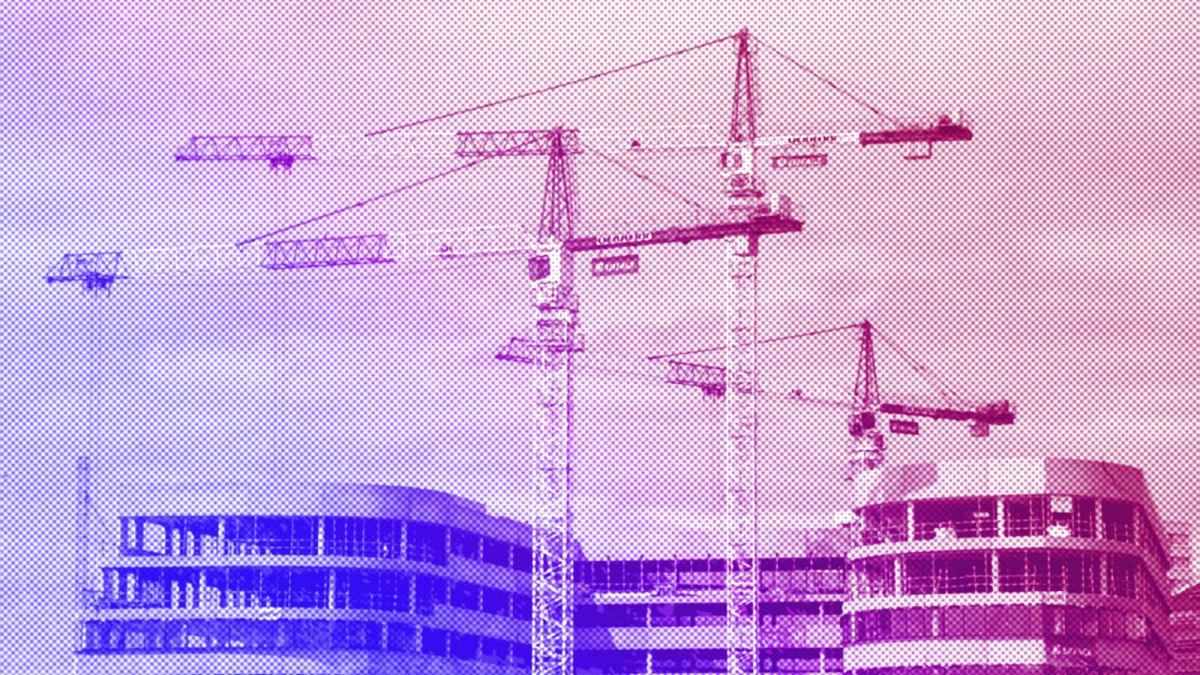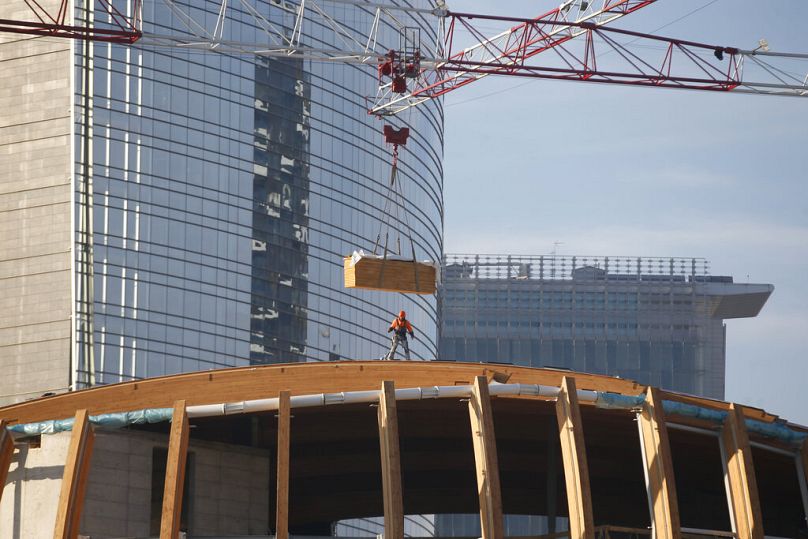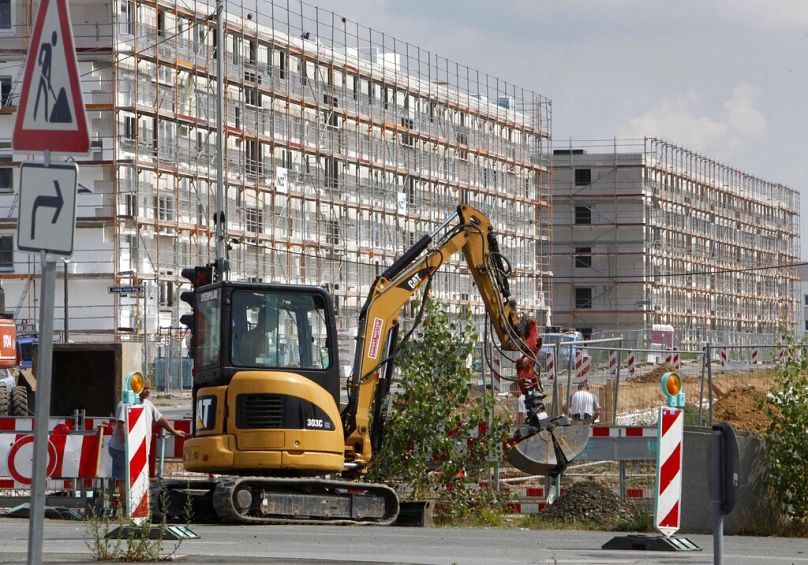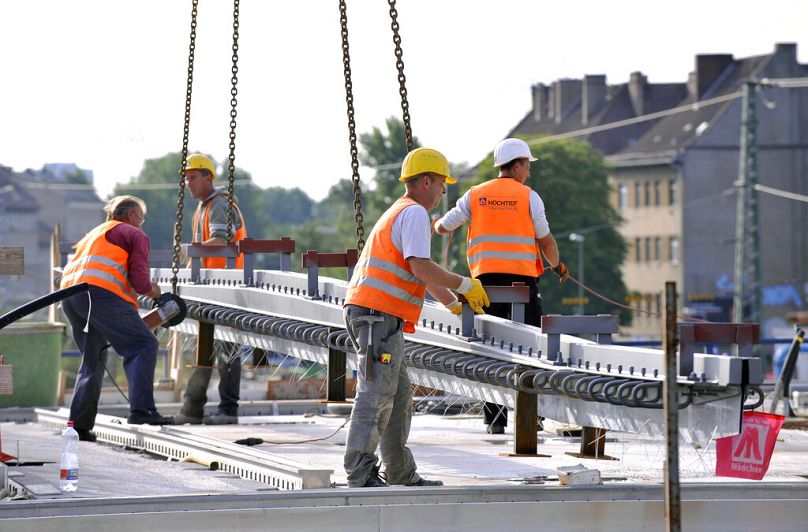The decarbonisation of our construction sites is long overdue. Building is fundamental to human life, yet the way we do it is stuck in the previous century, Eric Alström writes.
The world’s population is set to hit almost 10 billion by 2050. This will lead to new homes, schools, offices, shops, government buildings, hospitals, and all kinds of supporting infrastructure.
We will create new towns and cities to support the lives of people across the globe. In fact, the International Energy Agency estimates that the global built floor area will increase by around 20% by the year 2030.
That’s the equivalent of adding the surface area of the city of Paris to the planet every week through 2050.
Yes, you read that correctly: that’s almost 1,400 new cities the size of Paris (in terms of square footage) by 2050.
It's a good thing — as long as we change our approach
I see this as a good thing; the world needs better infrastructure and buildings, especially for the burgeoning population. However, for all of this, we will need construction machinery.
The construction industry is already one of the world’s largest economic ecosystems. In fact, one report forecasts that the global construction machine market will grow to €97 billion by 2042.
While construction is good and needed, the sheer size of the sector comes with a heavy environmental toll.
Materials and construction of buildings currently account for approximately 11% of global emissions, a fact that simply can’t be ignored.
Despite its significant impact on global emissions, the construction industry remains a relatively overlooked player in the electrification revolution.
This needs to change, urgently. And we have the tools to change it.
Hammering in the importance of the right tools
The first step for change starts with excavation. Before building takes place, excavators must dig holes, level the ground and remove dirt, trees, or rocks that stand in the way.
Typically, diesel-powered machines emit the lion’s share of construction machinery emissions. In fact, excavators account for 50% of all carbon dioxide emissions created by construction machinery, with 200 megatons released annually by excavators alone.
Yet beyond the emissions, a large bulk of the energy consumed by excavators is simply wasted.
Today’s excavator systems are only 30% efficient, meaning that 70% of the energy the engine produces is lost.
This equates to an estimated €52.5bn a year wasted by excavators alone on a global scale.
It is technically possible to electrify virtually all processes on a construction site with readily available technology today, and one might think this is the way to go.
However, due to infrastructural barriers at construction sites and across the industry as well as commercial viability, this is not yet a simple replacement process or the best use of resources.
Instead, the key to begin decarbonising these machines at this stage is to implement energy-efficient solutions that can immediately reduce the fuel consumption used in machinery such as diesel excavators, and at the same time, address some of the challenges for electrification, ultimately enabling its acceleration.
These energy efficiency measures — such as digital displacement — enable the excavator to deliver more work with a smaller engine and less fuel.
Some of these measures can deliver fuel savings of 15-30% while at the same time increasing the work capacity of the machines.
Furthermore, these energy-efficient technologies can reduce the size of the battery needed to electrify them by up to 25%. This also reduces the amount of charging power and thereby renewable energy required to make the same impact.
A shift with many benefits
In the longer term, we cannot ignore the forecasted exponential drop in electrical energy prices.
The seismic shift in the competitiveness of renewables over the past decade is only a glimpse of things to come; the price of solar power dropped by over 80% from 2010 to 2018, offshore wind by more than half, and onshore wind by 49%.
Even amid a global energy crisis where energy costs have recently increased across the board, price increases for natural gas, oil, and coal have far outstripped those for new PV solar and wind installations.
Laying the groundwork for a more efficient and fully-electrified construction industry is an act of forward-thinking economic self-interest. It makes environmental and economic sense.
Moving the construction industry away from fossil fuels and inefficient technologies will also have a positive impact on public health.
Air pollution is currently responsible for an estimated 7 million premature deaths per year. Electrified construction sites would contribute to cleaner air in urban areas, which is an obvious benefit for surrounding homes, offices, schools, and hospitals.
Electrification of construction machinery also opens the door to silent construction. Indeed, the WHO recommends that background noise should not exceed 40 decibels.
The average sound levels around a construction site are 80 to 90 dB. We can change this.
We can't be stuck in the past
The decarbonisation of our construction sites is long overdue. Building is fundamental to human life, yet the way we do it is stuck in the previous century.
As we strive to accommodate a more populous world, we must do it in a way that is environmentally, socially, and economically responsible.
Without taking bold steps to decarbonise the construction industry today, we will be forced to create the buildings of tomorrow by using the same outdated, wasteful, and carbon-intensive practices of yesterday.
To tackle this head-on, governments need to use every policy lever available to ensure the rapid decarbonisation of construction machinery.
Policymakers should also use both tax incentives and subsidies to nudge developers and contractors towards an energy diet heavy in electricity and efficiency, instead of inefficient fossil fuel-reliant machines.
Globally, we have all the tools we need to ensure our construction industry aligns with our climate goals. What are we waiting for?
_Eric Alström is the President of Danfoss Power Solutions.
_
At Euronews, we believe all views matter. Contact us at view@euronews.com to send pitches or submissions and be part of the conversation.




